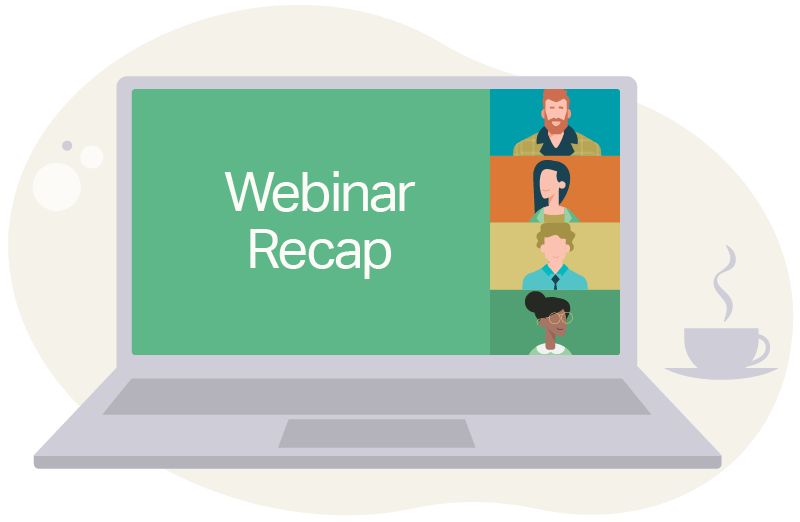Webinar Recap: The secrets of coaching ultra-high sales performers

You may think the best way to build an ultra-high performing sales team is to hire ultra-high sales performers. But that high-performing talent might be hiding on your current team. With a little coaching in the right direction, you can inspire your team to rise to new heights and lead them to their best numbers yet.
In our recent Human Capital Institute webinar, we asked Chief Strategy Officer Keith Lubner of Sales Gravy to share his experiences, tips, and advice to help us understand the journey of the ultra-high performer and what sales managers can do to guide their teams along that journey.
Five core disciplines
To understand how to nurture an ultra-high performer, or a UHP, we must first understand how they operate. Keith took us through five disciplines all UHPs have in common.
Time
There are 24 hours in every day for everyone. High performers know how to use every minute to their advantage. They prioritize the activities that will make an impact on their bottom line and minimize time spent on trivial activities.
Pipeline
They understand the pipeline is life. If you have a strong stream of prospects, you can be selective and say “no” to less profitable deals, which ultimately gives you more time. If your pipeline thins out, you end up in a place of desperation where emotion can quickly take over.
Probability
UHPs stay focused on the deals that are most likely to come through. If you’re at the end of the quarter and you haven’t hit your quota, you’re going to delude yourself into thinking you can start closing stalled deals with a call “just to check in,” which is a waste of time.
People
There’s no way around it. People are at the core of sales success. We have to establish relationships with our customers, understanding what they need and helping them understand what we can offer. UHPs know how to connect person to person.
Emotional
In sales, the person most likely to get what they want out of an interaction is the person who maintains the most control over their emotions. UHPs know if you can control your emotions and influence the emotions of others—you win.
Once he established the disciplines of UHPs, Keith went onto explain how sales leaders can develop these disciplines among their team and improve sales productivity in the process.
Power of because
We all live in patterns. Buyers are no different. To reach them, we have to break through their patterns. We can do this with the power of because. Years ago, a study conducted by a Harvard professor found students who tried to cut in line were able to do so at a more than 90 percent success rate as long as they gave a because. Without a because, we are no different than any other salesperson trying to break through the noise of a person's day. With a because, specifically one that highlights the benefits to the prospect, we can interrupt the pattern.
Leadership Tip: Develop Because-Based Messaging
Work with your sales team to build out messaging that incorporates “because” and ties it to something that has an emotional value, tangible value or curious value. Tap into their needs and make sure they know you can deliver.
The time threat
Keith pointed out the biggest threat to a sales person’s income is time. If their time is eaten up by useless tasks or they are continuously distracted during their peak prospecting hours, their pipeline can fall by the wayside. He says the most transformational thing a salesperson can do is optimize their time.
Leadership Tip: Build the Model Sales Day
Encourage salespeople to create their own daily battle rhythm — a model sales day. Help them understand their peak commission hours. Make sure they establish clear blocks of time to focus solely on sales activities during these hours. These blocks should be protected at all costs, administrative tasks and office chit chat can wait.
Taking the sting out of objections
Objections are everywhere in sales. And they can sting. We have a tendency to equate objections with rejections. But they aren’t. Once we’re able to disconnect objection from rejection, we can take a step back from the emotional sting and let our logical brain step back in and take over. This is how we can turn things around, push through and get beyond the objection. Where the money is.
Leadership Tip: Map Objections and the Turnaround
The best way to take the emotion out of an objection is to be prepared. If your sales people know what’s coming they can reset and reroute more quickly. As a team, build out common objections you’re getting from prospects. Develop logical turn arounds they can use to disrupt the objection and get the conversation back on track.
Five questions
Even in the most complex, seemingly dry industries, sales are built on emotional connection. Before anyone will be willing to close a deal with you they’ll ask themselves five questions
- Do I like you?
- Do you listen to me?
- Do you make me feel important?
- Do you get me and my problems?
- Do I trust and believe you?
If you’re approaching every sales conversation working to answer these questions in the affirmative, you’ll get the big “yes” when it’s time to close the deal.
Leadership Tip: Document the Questions
Have everyone on your sales team write down the five questions before they go into prospecting. Once that’s done, work with them to develop discovery questions that will help them “get yeses” and form the connection. Put the buyer at the center of every question, using the phrase: “help me understand.”
Keith covered a lot more ground in the 50-minute webinar. Delving into the science behind why objections trigger our emotions, how relationships are formed with prospects, the consequences of a pipeline grown stale, and everything he’s learned from his own mistakes. Check out the full webinar for even more insights.

